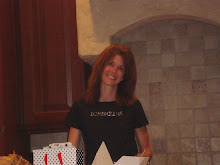Software is used to organize the storage of data. Otherwise knows as DMBS.--the systems are categorized according to the model they support and the query languages that are available to them.
Hierarchical Model
- data organized into an inverted tree-like structure--this establishes logical relationships among the data of multiples files.
- each record on one level can be related to multiple records on the next lower level
- records participate in any number of named relationships
- relationship associates a record of one type with multiple records of another type--these relationships are called sets
- traditionally implemented by chains of pointers between related records
- tend to store records with links to other records
- promotes greater flexibility and data accessibility
- complex to design and develop a network database
Relational Model
- uses a table where information about an entity is represented with columns and rows
- columns enumerate the attributes of an entity
- rows (records) represent instances of an entity
- queries is how users request data--database returns a result set--a list of rows that constitute the answer
To be honest, as i continued to read the rest of the article, I was confused. I clicked on hyperlink after hyperlink to get a better understanding of what was being stated--just added to my confusion. Parts of the article were understandable (security) but a lot more of it just added to my confusion.

1 comment:
I had a lot of trouble with all the jargon, too. Even going to the links just made my head hurt. I reread it the next day (yesterday), though, and it helped. I mean, databses aren't that hard to understand, but when there's a ton stuff being thrown at you for the first time, it's difficult to get your head around it all. And the article did explain a few terms that I'd heard often ,and never really thought about, so if you can go back and try again, I think you'll find it pretty helpful.
Post a Comment